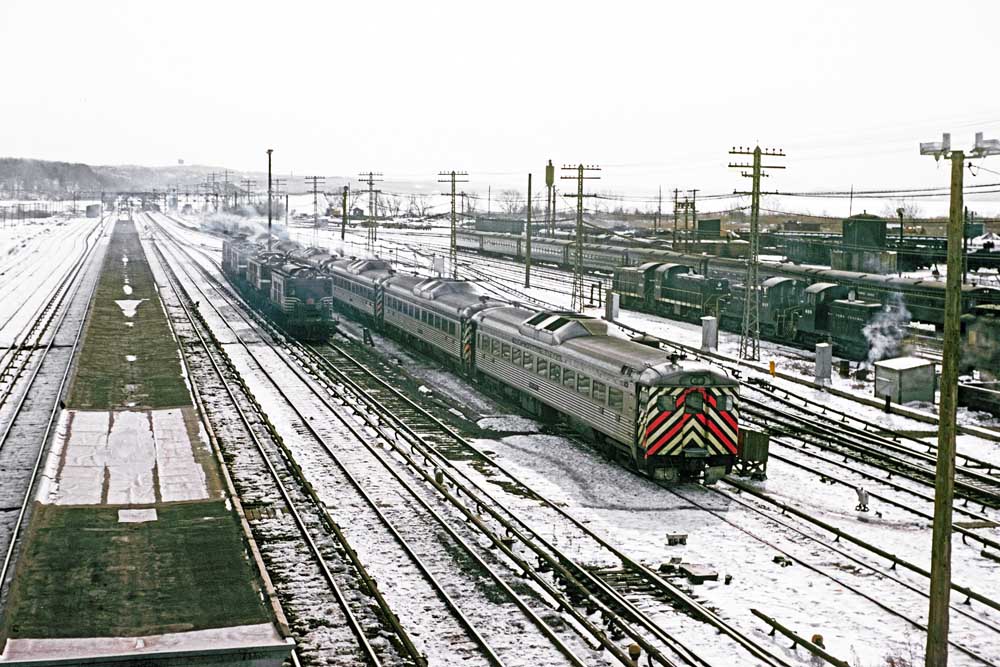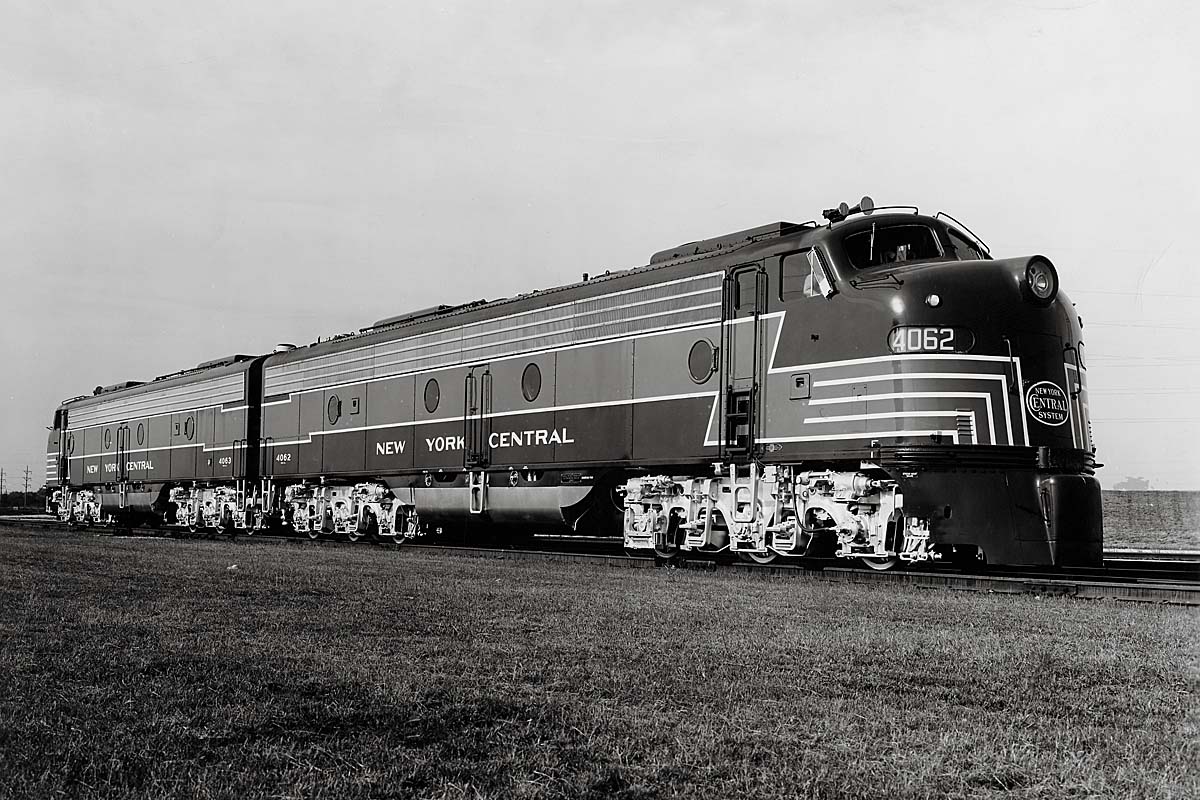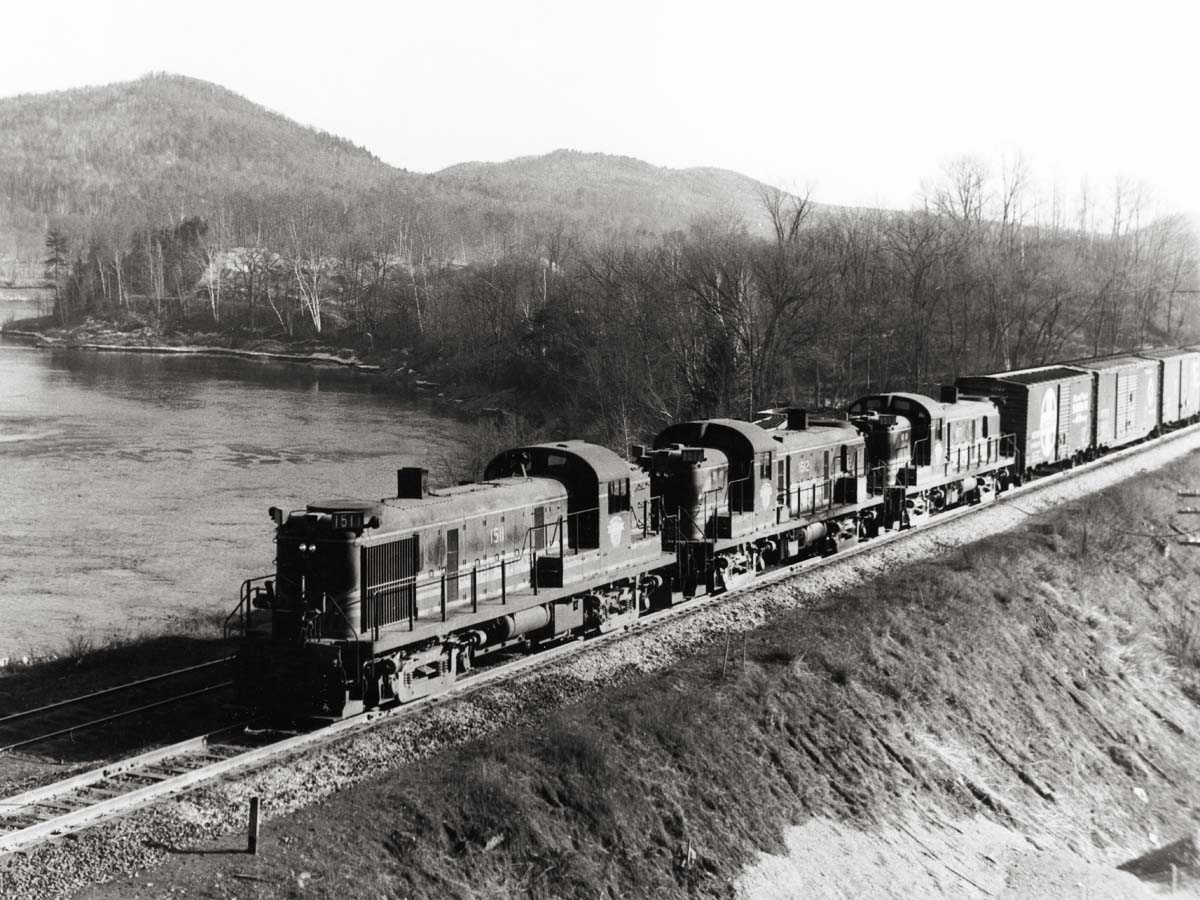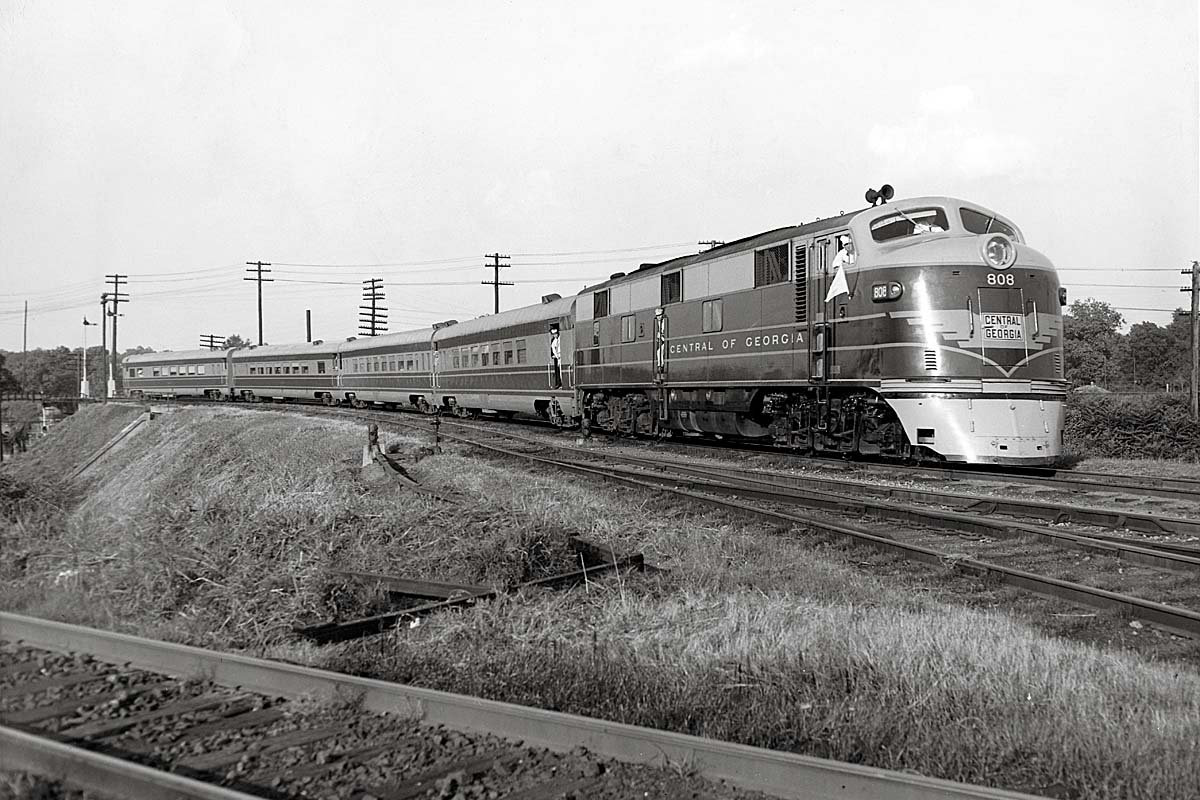
Like many other railfans back in the mid-1960s, I was shooting using black & white negative film essentially on an exclusive basis. Reasons for this included budget (color slide film and processing were more expensive than monochrome), camera quality issues (it turned out that my Argus C-3 could do a reasonably good job with slide film on a sunny day with static subjects, however), and the fact that there appeared to be little chance of seeing color work in print. Re: the last, my black & white shots weren’t destined for near-term use in Trains, either, but we could hope, right?
On Dec. 25, 1965, when the gift of a roll of unexposed Kodachrome slides were received, I put it to immediate use taking family holiday pictures. This didn’t exhaust the roll, however, and when a railfan friend and I set out to visit the New York Central’s facilities at Harmon, 32.7 rail miles north of Grand Central Terminal in Manhattan, as well as other points north on the Hudson Division, on Jan. 29, 1966, I thought, why not use up the balance of the slide film on railroad subjects?
In truth, from a railroad livery perspective, the NYC at that point in time wasn’t exactly colorful. Freight locomotives and switchers were painted black; passenger diesels were by now mostly in the gray “cigar band” paint scheme, and the electric locomotives used in the New York City area were also rapidly migrating into the cigar band livery, although a few still retained their classic two-tone gray with “lightning stripes” paint.
With that as background, my railroad Kodachrome slides began with an overhead view, taken from the bridge over the tracks at the station, looking south. Although the New York Central itself would disappear into the Penn Central in two years and a few days, there was no visible evidence of this forthcoming event in view.
Harmon (by 1966 denoted as “Croton-Harmon” in public timetables) was near the north end of the railroad’s electrification on the Hudson Division, and thus, the site of the locomotive change for through passenger trains. First, of course, this had been from electric to steam for westbounds (and vice-versa for eastbounds); by 1966, diesels had replaced steam for well over a decade.
Visible at the left of this photo is the canopy over the westbound passenger platform, which serviced (left to right) tracks three and one. The station layout at Harmon was unusual in that there was essentially no parallel overlap between the westbound and eastbound platforms, each extended outward essentially from the overhead road bridge, the eastbound facility to the north, and the westbound to the south.
The view looks south towards the bridges over the Croton River, which flows into the Hudson River at this location. This is the south throat of the yard and servicing facilities at Harmon; a multi-track signal bridge just north of the bridge’s controls access to the four-track third-rail electrified main line.
To the right of westbound track, one is eastbound track two, and next to it is the track where electric locomotives await their next eastbound assignments. Four are present, including a single “T-motor,” still in the lightning stripe livery and behind it, three of the later “P-motors.” The latter were built for use on the Cleveland (Ohio) Union Terminal electrification project in the late 1920s. When the use of diesels obviated the need for them in Cleveland, the NYC moved them to the New York City area, and in the process converted them from overhead catenary/pantograph configuration to under-running third rail operation.
The T-motor pictured is in the process of entering the type’s fifth decade of service, since the newest one entered service in 1926. To put this in perspective, the signature New York Central steam locomotive, the 4-6-4 Hudson type, named for the river in view here, didn’t arrive until 1927. For that matter, the T-class effectively “lapped” all the NYC’s modern passenger steam power, including the later L-3 and L-4 class Mohawks, as well as the (essentially) post-World War II Niagaras.
The Ts were there for the arrival of all these classes of steam; they were still there, doing what they had done since the 1920s more than a decade after all the steam was gone. For that matter, the P-motors out-lasted the Ts, serving into the Amtrak era in 1974; locomotives that were built in 1929-30 pulling the trains of an entity that didn’t exist until 1971.
To the right of the electrics is a layover track being utilized for Budd RDCs that the Central was using primarily for off-peak commuter service terminating in either Peekskill or Poughkeepsie, New York. These units had arrived at the southbound platform and then proceeded to this track after unloading to await their next duty, when they will head back north and cross over to the westbound side, and then back down to a spot on tracks one or three before heading timetable west again.
Further to the right in the photo are back-to-back pairs of end-cab switchers: Alco S3s to the left, and EMD SW1s to the right. Beyond that is a string of postwar MU (multiple unit) cars used in commuter service on the Hudson and Harlem divisions; both those built by St. Louis Car Co. in the early 1950s, with the larger windows, and more recent arrivals from Pullman-Standard, some delivered as recently as 1965, which had smaller windows (well, the commuters using them typically were perusing their newspapers or other reading matter rather than gazing out at the beautiful Hudson River valley).
Finally, although it’s difficult to see here, there is a string of three NYC E units, a pair of E8s bracketing an E7, behind the MU cars. As I recall, the timeframe for the photo was midday; it’s possible that this trio had led the eastbound 20th Century Limited earlier in the morning and could be awaiting its turn in the shop that is north of the road bridge.
I’m glad that I took that roll of Kodachrome with me on that long-ago January day, and that it can be seen now on a widespread basis to look back at the history that it portrays. The glory years of the NYC are over (although the T-motor was doing its best to remind the photographer of them); for that matter, as we now know, the NYC doesn’t have much longer to be out in public either.













